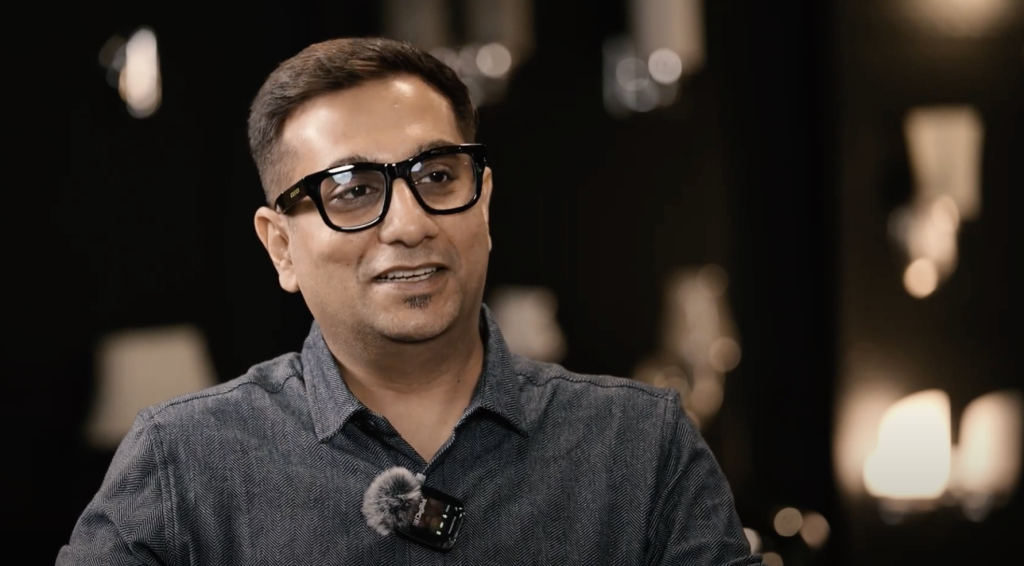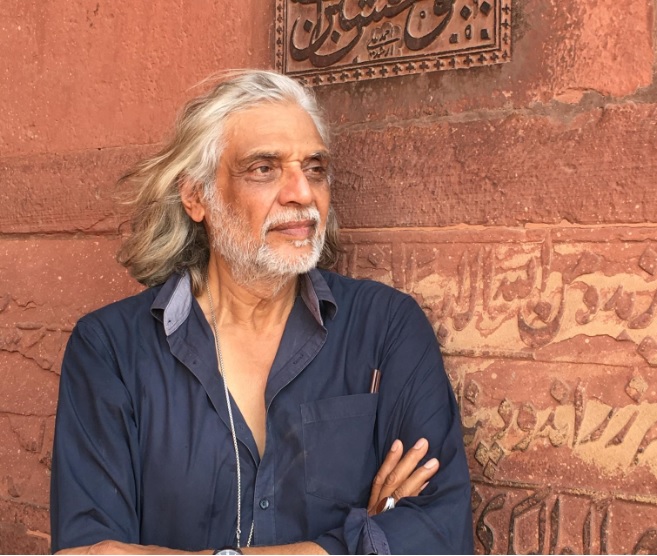Welcome to Samvaad, where art meets conversation, and inspiration knows no bounds. Here we engage in insightful conversations with eminent personalities from the art fraternity. Through Samvaad, Abir Pothi aims to create a platform for thought-provoking discussions, providing readers with an exclusive glimpse into the creative processes, inspirations, and experiences of these creative individuals. From curating groundbreaking exhibitions to pushing the boundaries of artistic expression, our interviews shed light on the diverse perspectives and contributions of these art luminaries. Samvaad is your ticket to connect with the visionaries who breathe life into the art world, offering unique insights and behind-the-scenes glimpses into their fascinating journeys.
In this episode of Samvaad, we have the privilege of sitting down with Ashish Agarwal, founder of Ashish Agarwal Interiors, a purpose-driven interior design firm based in Guwahati, Assam. Specialising in residential, commercial, retail, and office spaces of varying sizes, their portfolio reflects a commitment to creating environments that evoke human emotions and foster a sense of belongingness. From multinational corporations seeking growth-driven atmospheres to individuals envisioning their dream homes, Ashish Agarwal Interiors caters to a diverse clientele with meticulous attention to detail. Joining us for this insightful conversation is Nidheesh Tyagi from Abir Pothi, as we uncover the visionary insights driving the creative force behind Ashish Agarwal Interiors, shaping the landscapes of tomorrow.
Nidheesh: Hello, I’m Nidheesh Tyagi. Welcome to this special edition of Abir Samvaad happening at the Jaquar Orientation Center in Guwahati. This session is special because we are conducting it offline for the first time. So far, we have been conducting online interviews. This session is also special because we are talking to a young and dynamic interior designer from Guwahati, Ashish Agarwal, who has been practising for 17 years. He started as a Commerce student and then moved into design, which was his core calling. Start with your, how did your journey start and how did you get here?
Ashish: Well, my journey started at the age of seven itself. I had this creative bend of mind, as my mother says. I remember making a model of Battlefield. Although I was pursuing Commerce as a career and studying here in Guwahati, there was a calling for creative work. So, I just went to Delhi and took up design as a course. My soul is creative, I would say. If I had not been in design, I would have been doing some other creative work. When I was studying, I could make perspectives without any formal education. I was doing sections without any formal teaching. It came automatically to me. Since then till today, I’ve been designing with my hand. I mean, I do sketches. I don’t use the computer so much. I do editing and then some kind of reviews and everything I do on the computer. But the core design comes on paper with my pencils. Interior designing is something which I love a lot, especially because it touches the emotions of the people, the occupants. Every element of design speaks a different language and touches different emotions of the occupants or the person we are designing for. So, interior designing for me is like religion. It’s like preaching. It gives peace to my soul. Although it’s a very subjective matter, what is nice, and what is not nice, it’s very subject from person to person. Interior designing is something that’s going to go a long way. It’s going to transform things. The more I speak, the less it seems.
Nidheesh: So, take us through the big milestones, I mean starting from now to then, which you think are the kind of the big ticket things you did in these 17 years.
Ashish: All right, so there was quite a twist and turn in my career coming from a Commerce background and then suddenly switching on to design. Although I did not realise it, I was a gold medalist in Delhi. But soon, I realised that I didn’t have a direction for what kind of design I was going to do. I had an elaborate experience with architects from CEPT University and Tulsi Vidya Bharti. It happened that I was doing commercial designing in terms of, I would say, industrial designing. Later, when I came back to Guwahati to see my city, I realised that there was no opportunity to design industrial products or point-of-purchase retail. Then I got a breakthrough from one of my friends that, you know, Ashish, why don’t you try and design my house? Then I realised it’s again a very interesting area where I can really do something creative, at the same time, I can make it very functional and appealing and feed my soul as well. From there onwards, I was getting projects one after another. I did not realise five to seven years flew away, and then I was doing top-of-the-line projects in Guwahati. So, I enjoyed thoroughly what I was doing at that point in time. Then the journey took a different direction. I started trying my skills in other areas. I got opportunities.
One memory I have from the past is that Guwahati was not ready for retail design at that point in time. So, there were a couple of companies who wanted to bring in brands like Baskin Robbins. One project I remember, this company was struggling to have a store in Guwahati, and then there was no one who could understand this design language and get it executed. So, I just came into the picture, and I had a very great experience in retail designing, so we just pulled it off in a couple of months, and it was doing really well and had international appeal. Guwahati was not ready for those kinds of designs at that point. It was a very new thing for a city like Guwahati. Eventually, we did quite a few of those Baskin Robbins outlets, and then retail stores started coming my way. I did Hero Honda stores and other stuff, and recently, we did a liquor store, which is in this part of India where liquor consumption is really high, and those stores are very frequent. Every 50 meters, and 100 meters, you’ll find a store, but then the experience is not there. So, one of my friends who was into the liquor trade, sat with me and said, “Ashish, I don’t have a budget, but I have an idea.” I said, “Well, no worries. I’m always there for an idea to share, and why not?” So, we started discussing a project where we thought we’d make a liquor store where people from different strata and from high net worth individuals also can come and have a good experience. So, with this, the store called The Whiskey Company just across the GS Road and the same very road itself. It got featured in Brew and Spirits, one of the leading magazines, and it has a lot of success stories along with it. Post that, we did another store. This was done a couple of years back, and this year itself, we did another store, the size is around 8,000 square feet, and it is one of the biggest liquor stores, I would say.
Nidheesh: Ashish, tell us about how you process the design thing, how you visualise it, and how you go from idea to outcome. How do you kind of work it through?
Ashish: Well, whenever a client walks into our office and they want to understand what kind of project we are going to do for them, we have an approach of understanding the client’s behaviour and what they’re passionate about. We try to understand the person in detail, their life stories, maybe where they come from, where they want to go, and what inspires them. We also delve into where their emotional areas lie—are they a family-oriented person or someone who really wants to do a lot? Once we understand that person’s personality along with the family members who are going to stay with them, then we come up with a proposal. We do a discovery session over coffee, take them through pictures, and talk about their small expectations from the house. Maybe they will sit on the balcony and have a cup of coffee, whether they are a reading person or they want to chill more around the house or want to entertain guests. Everything is about not jumping to a conclusion and just designing after understanding all this. Within, we try and sit with our design team, we debate, we throw questions at each other, we go through a lot of sketches, ideate, and at times, the client is not aware of what is cooking up inside the office. So, we might get a call maybe after a week or so asking, “Are you really doing my project or not?” Then we say, “Have patience, we will come up with some solution, don’t worry.” So far, we’ve been doing this and enjoying it a lot. It brings a lot of good results. It gives us a very real and original approach to it. It’s very subjective what the client wants, and every individual is different. We try to bring that solution to that project.
To be continued…





